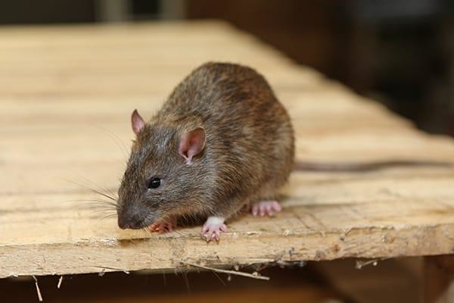In autumn and winter, humans tend to hunker down and spend more time indoors. Why not hang out where you know there are plenty of warm spots to get cozy and find food to eat? Rodents feel the same way when the weather gets cold outside.
Roof rats and Norway rats are two of the more common rodents that infest homes and businesses in South Carolina in the winter. Here's how to properly identify these two common rat species.
Roof Rats
Roof rats aren't native to the Americas but arrived here on the first sailing ships from Europe. Roof rats are known as carriers of the Black Plague and are classified into three subspecies that grow up to 16 inches long:
- Black rat - black fur, gray belly
- Alexandrine rat - brownish-gray back, gray belly
- Fruit rat - brownish-gray back, white belly
These three species may interbreed, but roof rats cannot breed with other native rats.
Behavior and Habitat
Roof rats love trees and arboreal life. This explains why they're comfortable hopping around on your roof and getting into your attic via overhead tree branches, utility lines, and vine-covered fences.
As tree dwellers, roof rats are prey to birds. They're not the smartest rats, but they are very wary of new items in their surroundings. Roof rats are prolific breeders who prefer nests built off the ground. Fall and spring are their prime breeding seasons, but the rats will breed year-round in warm homes and semitropical coastal areas.
Mother rats may wean more than three litters of five to eight young. The offspring can reproduce at three months of age. It's easy to see why the roof rat and its progeny can overtake a home or commercial structure in a short period of time.
Roof rats are omnivores who eat anything. They need plenty of water but can sometimes get enough from the foods they eat.
Norway Rats
Norway rats arrived in the colonies with Hessian troops hired to fight colonists in the 18th century. The Europeans had been dealing with the rodent natives of Asia for a century before they exported some to the New World.
The rats are not native to Norway. However, the species was identified and described by Norwegian scientists. Like most rats, Norway rats are vectors for many diseases that are dangerous to humans.
Norway rats are cousins to roof rats, but they are larger. Norway rats can grow up to 19 inches long - including their tails. They are stockier than their sleeker roof rat relatives.
Behavior and Habitat
Norway rats are burrowing rats that love to shred any available materials for their nests. Fabric, books, and other materials are often used to line nests in rubbish heaps, woodpiles, and basement nooks and crannies.
Norway rats are great climbers but prefer to burrow on lower floors of structures. They also like to stay close to home. Norway rats seek out food sources and water and build nests nearby to have adjacent access.
Norway rat mothers can have four to six litters per year. They are as great at breeding as their roof rat relations. Norway rats are omnivores like roof rats, but they'll feast on your available grains, nuts, pet food, meats, and fruits first.
Controlling Rats in Your Home and Business
Both roof rats and Norway rats are best controlled with integrated pest management. This involves using a combination of strategies which may include:
- Identifying and sealing entry points
- Baiting and trapping
- Setting rat poison stations
- Removing attractants
If you have trees in your yard, trim branches that touch your structure or roof. Woodpiles and other burrowing spots should be covered and monitored throughout the year.
Contact The Original Bugman Pest Elimination, Inc. to learn more about fighting rodent infestations in your home or business. We provide effective rodent control services in Lexington, Columbia, and the surrounding areas. To get started, make a pest control appointment with us today!
Schedule Your Free Inspection
Complete the form below to schedule your no-obligation inspection.

